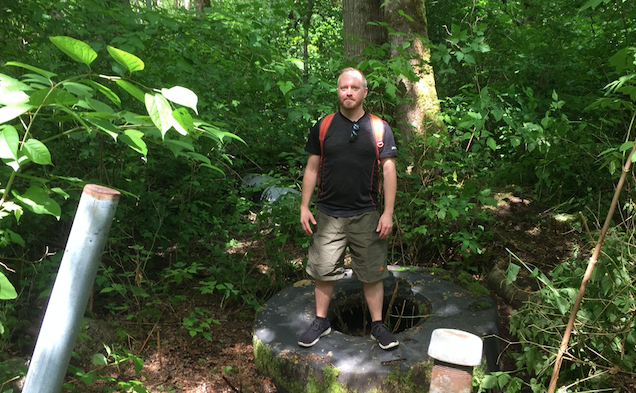A stretch of forest and wetland behind Gates Park in Port Coquitlam is cleaner thanks to the efforts of Carl Ronka.
But the local ecologist has run into a snag.
Construction debris left to rot in the trees between the park and the Coquitlam River is making cleaning up trash more dangerous for Ronka, as well as the youth workers and volunteers of his non-profit organization, Web of Life — and could possibly damage the river’s ecosystem.
Much of the area is being taken over by invasive species, such as Himalayan balsam, knotweed, blackberry and ivy and Ronka would like the debris removed and the area replanted with indigenous plant species.
“This whole area really needs a full scale clean up and restoration,” says the Coquitlam resident, who started Web of Life to channel donations.
He also grew up swimming in the river and now wants to protect it and make the surrounding area as pristine as possible.
LARGE TRUCK TIRES, CONCRETE, STEEL AND WIRE HALF-BURIED IN THE GROUND
You don’t have to walk far off the Traboulay PoCo trail to see what he means.
Just a few dozen yards into the forest near the Pitt River Bridge reveals huge piles of dumped materials, including several giant truck tires, concrete, wire, pipes, culverts — even a discarded tank, its contents unknown and possibly leaking.
“That’s lead paint,” Ronka says, pointing to the tank that sits half buried beneath salmonberry bushes and other plants. “I found this stuff almost growing into the trees.”
He believes the dump may be a relic of construction in the area dating back 50 years; some old pop bottles found that were identified by a Vancouver collector suggest the some of the trash is from the 1970s, Ronka said.
However, much of it lies buried, he believes, noting: “The stuff I’ve seen is probably a fraction of what’s there.”
Ronka’s clean up efforts are part of a community-wide attempt to remove trash and litter. Over the years other groups and individuals have tried to keep up with the trash that people drag into and alongside the river.
Recently, the Coquitlam River Roundtable took on the task, organizing volunteer cleanups, including engaging students and local homeless in the effort.
Sharee Dubowits, coordinator of the joint city, government and community agency, said youth at Riverside Secondary are making a litter sculpture of trash found in the area and homeless individuals were given gift cards to a local restaurant to participate in the cleanup.
CONSTRUCTION DEBRIS HIDDEN IN THE FOREST; CITY SAYS IT ONLY DUMPS ORGANIC MATERIAL
But she said her group wasn’t aware of the construction material dump site.
“As far as the roundtable is concerned, it was news to us about the level of litter hidden in and around those trails,” said Dubowits in an email to Tri-City News.
“It's not something you would notice if you weren't looking for it, especially when it greens up in spring.”
The city of Port Coquitlam said it is aware of a disposal site near Gates Park, but it only disposes of organic materials such as woody debris and leaves.
“City staff monitor the site regularly and remove illegal dumping debris deposited by other parties as required,” said Forrest Smith, the city’s director of engineering and public works in a statement to Tri-City News.
Ronka is pleased that the city tends to respond quickly to remove piles of trash he pulls out of the woods with the help of youth paid to support the effort with Web of Life donations.
In recent weeks, he’s pulled out several hundred pounds of garbage, some of it collected from abandoned homeless camps, all manner of junk was collected, including mattresses and tires.
However, it would be a back-breaking task to remove all the large construction materials and Ronka would like the city’s help and commitment to restoring the area to a more pristine state.
Said Ronka about the task of convincing the city to do more: “I guess I’ll have to push a little harder.”
To contact Ronka about his cleanups, email [email protected]




